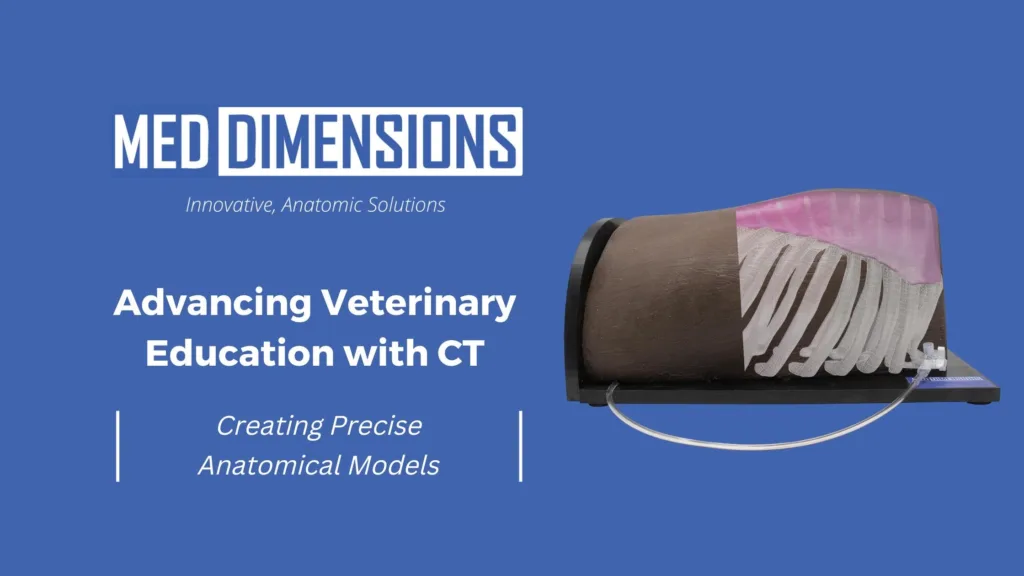Advancing Veterinary Education with CT: Creating Precise Anatomical Models

In the realm of veterinary medicine, the use of anatomical models plays a crucial role in educating aspiring veterinarians and veterinary professionals. While conventional models often rely on artistic interpretation, recent technological innovations have opened new horizons for crafting highly accurate educational models. An essential breakthrough is the integration of CT scans, which serve as a dependable foundation for developing anatomical models in the veterinary field.
CT Scans and Anatomical Precision
Computed Tomography (CT) scans have transformed the way we explore the anatomy of animals. CT scans employ a series of X-ray images captured from multiple angles and reconstruct them into detailed cross-sectional images. The result is a three-dimensional representation of an animal’s internal structures, offering unmatched precision. This precision extends to bones, soft tissues, and even intricate organs, making CT scans an invaluable asset for veterinary medical education.
Minimizing Subjectivity
One of the significant benefits of incorporating CT scans into model development in veterinary medicine is the minimization of artistic interpretation. Traditional models often depend on the artistic rendering of anatomical structures, which can introduce subjectivity and potential inaccuracies. In contrast, CT scans provide an objective and data-driven basis for model creation. This ensures that the final models faithfully represent actual anatomical structures in animals.
Emphasis on Clinical and Educational Aspects
By commencing the model development process with CT scans, designers can redirect their focus towards the clinical and educational aspects of the models. Instead of spending time deciphering and replicating the complex anatomy of animals, they can dedicate their efforts to enhancing the educational value of the models. This includes improving the models’ educational utility, functionality, and overall effectiveness for veterinary students and professionals.
Enhancing Veterinary Education
The incorporation of CT scans into the creation of anatomical models is a significant advancement for veterinary education. The heightened level of anatomical precision provided by CT-based models reduces the need for artistic interpretation, allowing designers to concentrate on the clinical and educational aspects of model development. As technology continues to evolve, veterinary education will undoubtedly benefit from the accuracy and objectivity that CT scans bring to the field of anatomical modeling in veterinary medicine.